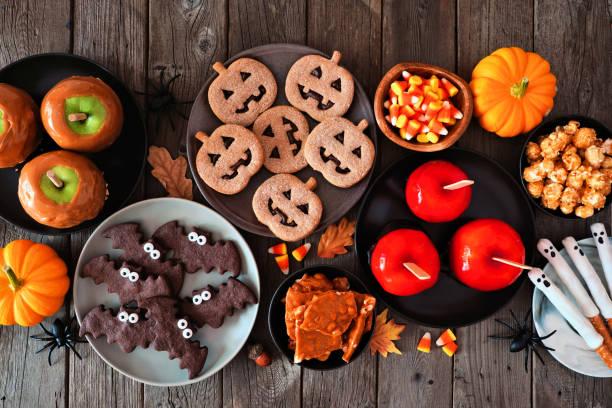Introduction:
In the realm of confectionery delights, the marriage of vibrant, juicy fruit with the rich, indulgent allure of chocolate creates a harmonious symphony for the senses. Chocolate-covered fruit stands as a testament to the delightful fusion of nature’s sweetness and the velvety luxury of chocolate. In this exploration, we embark on a delectable journey into the world of chocolate-covered fruit, unraveling its origins, diverse varieties, and the simple joy it brings to both casual indulgers and discerning connoisseurs.
-
A Marriage of Flavors: The Origins of Chocolate-Covered Fruit:
The roots of combining chocolate with fruit trace back centuries, with the Aztecs and Mayans being among the first to appreciate the synergy of cacao and fruits. However, the modern concept of chocolate-covered fruit has its origins in the early 20th century, when chocolatiers began experimenting with coating various fruits in chocolate to create a confectionery masterpiece.
-
The Art of Chocolate Coating: Crafting the Perfect Shell:
Creating the perfect chocolate-covered fruit involves more than simply dipping fruit into melted chocolate. The process requires finesse, an understanding of chocolate tempering, and a selection of quality ingredients.
-
Tempering Chocolate: Tempering is a critical step to achieve the glossy, smooth texture and satisfying snap of chocolate-covered fruit. It involves melting chocolate to a specific temperature, then cooling it gradually. This process ensures the formation of stable cocoa butter crystals, resulting in a visually appealing and textured chocolate coating.
-
Choosing the Right Chocolate: Quality chocolate is paramount. Whether dark, milk, or white, the chocolate should complement the flavor of the fruit. Dark chocolate pairs well with robust fruits, while milk and white chocolate enhance the sweetness of lighter fruits.
-
Adding Depth with Fillings: While the classic approach involves coating whole fruits, chocolatiers often experiment with fillings such as fruit purees, creams, or liqueurs to add layers of flavor and texture to the confection.
-
An Array of Delights: Varieties of Chocolate-Covered Fruit:
The beauty of chocolate-covered fruit lies in its versatility. From the familiar to the exotic, a myriad of fruits can be transformed into irresistible treats.
-
Strawberries: Perhaps the most iconic chocolate-covered fruit, strawberries perfectly marry the tartness of their flesh with the sweetness of chocolate. Their heart shape and vibrant color make them an ideal canvas for decorative drizzles or sprinkles.
-
Bananas: Slices of ripe banana, whether frozen or fresh, take on a delightful creaminess when coated in chocolate. The result is a satisfying blend of textures and flavors.
-
Oranges and Citrus: Candied orange peels or citrus segments dipped in chocolate offer a zesty, refreshing twist. The contrast between the citrusy burst and the smooth chocolate creates an enticing balance.
-
Pineapple: The tropical sweetness of pineapple complements chocolate exceptionally well. Whether in chunks, rings, or skewers, chocolate-covered pineapple is a taste of paradise.
-
Apples: Slices of crisp apples, particularly Granny Smith, provide a refreshing crunch beneath a layer of chocolate. Drizzles of caramel or a sprinkle of nuts add extra decadence.
-
Cherries: Whether fresh or maraschino, cherries enrobed in chocolate appeal to those who relish the classic combination of sweet and tart flavors.
-
Dried Fruits: Beyond fresh offerings, chocolate-covered dried fruits like apricots, figs, or mango provide a chewy, concentrated burst of sweetness.
-
Exotic Offerings: Adventurous chocolatiers may explore exotic fruits such as passion fruit, dragon fruit, or lychee, creating unique and visually stunning confections.
- Homemade Chocolate-Covered Fruit: A Sweet Symphony in Your Kitchen:
Creating chocolate-covered fruit at home is a delightful and rewarding experience. Here’s a simple guide to get you started:
-
Ingredients:
- Fresh fruit of your choice (strawberries, bananas, etc.)
- High-quality chocolate (dark, milk, or white)
- Optional: toppings such as chopped nuts, coconut flakes, or sprinkles
-
Instructions:
- Wash and thoroughly dry the fruit to ensure the chocolate adheres properly.
- Melt the chocolate using a double boiler or in short bursts in the microwave, stirring until smooth.
- Dip each piece of fruit into the melted chocolate, ensuring an even coating.
- Allow excess chocolate to drip off, then place the coated fruit on parchment paper.
- If desired, sprinkle toppings over the chocolate while it’s still wet.
- Let the chocolate-covered fruit set at room temperature or in the refrigerator until the chocolate hardens.
- Once set, indulge in your homemade chocolate-covered fruit.
-
Pairing Chocolate-Covered Fruit with Accompaniments:
The indulgence of chocolate-covered fruit extends beyond its standalone appeal. Pairing these delightful treats with complementary flavors elevates the tasting experience.
-
Cheese and Chocolate: Dark chocolate-covered fruit, such as figs or cherries, pairs beautifully with a variety of cheeses. The combination of sweet and savory creates a sophisticated tasting experience.
-
Wine Pairings: A plate of assorted chocolate-covered fruits invites wine pairings. Try pairing dark chocolate-covered berries with a rich Cabernet Sauvignon or white chocolate-covered citrus with a crisp Sauvignon Blanc.
-
Nuts and Crunch: Serve chocolate-covered fruit alongside a selection of nuts for a delightful contrast in textures. Almonds, hazelnuts, or pistachios add a satisfying crunch to the velvety chocolate.
-
Dessert Platter: Create a dessert platter with an assortment of chocolate-covered fruits, macarons, and small pastries for an elegant and shareable sweet finale to a meal.
-
Storing Chocolate-Covered Fruit: Ensuring Freshness and Flavor:
To preserve the freshness and flavor of chocolate-covered fruit, proper storage is essential.
-
Room Temperature: If consumed within a day or two, chocolate-covered fruit can be stored at room temperature in a cool, dry place, away from direct sunlight.
-
Refrigeration: For longer storage, especially in warmer climates, refrigerate chocolate-covered fruit in an airtight container. Bring them to room temperature before serving for the best taste and texture.
-
Avoid Moisture: Chocolate has a tendency to absorb odors and flavors. Store chocolate-covered fruit away from strong-smelling items to maintain their original taste.
-
The Health Halo of Chocolate-Covered Fruit: Balancing Indulgence and Nutrition:
While chocolate-covered fruit undoubtedly falls into the category of indulgent treats, the inclusion of fruit provides a touch of nutritional value.
-
Antioxidant Boost: Dark chocolate, in particular, contains antioxidants that may offer health benefits. The natural sugars and fiber in the fruit contribute to a more balanced treat.
-
Portion Control: Enjoying chocolate-covered fruit in moderation allows you to savor the flavors without overindulging. The combination of fruit and chocolate can be a satisfying alternative to overly sugary confections.
-
DIY Control: Making chocolate-covered fruit at home allows you to control the quality of ingredients, including the type of chocolate used and the amount of coating applied.
-
Chocolate-Covered Fruit as Gifts: Spreading Sweet Joy:
The aesthetic appeal and delightful taste of chocolate-covered fruit make them an excellent choice for gifting.
-
Special Occasions: Whether celebrating birthdays, anniversaries, or holidays, a beautifully arranged assortment of chocolate-covered fruit makes for a thoughtful and luxurious gift.
-
Gift Boxes: Many chocolatiers and specialty stores offer elegantly packaged gift boxes featuring an array of chocolate-covered fruits. These boxes make for a delightful present for friends, family, or colleagues.
-
Customization: Personalize your gifts by selecting specific fruits, coatings, or decorations that cater to the recipient’s taste preferences.
-
Innovations in Chocolate-Covered Fruit: From Artisanal Creations to Gourmet Experiences:
As the culinary world embraces innovation, chocolate-covered fruit has seen a surge in creativity and experimentation.
-
Artisanal Creations: Chocolatiers and boutique confectioneries are crafting artisanal chocolate-covered fruit with unique flavor combinations, hand-crafted designs, and premium ingredients.
-
Gourmet Pairings: High-end establishments offer curated experiences, pairing chocolate-covered fruit with fine wines, artisanal cheeses, or bespoke dessert platters for a heightened indulgence.
-
Specialty Offerings: From chocolate-covered strawberries dipped in gold to exotic fruit selections coated in rare chocolate blends, specialty offerings cater to those seeking an extraordinary and luxurious treat.
-
Conclusion: Savoring the Symphony of Chocolate-Covered Fruit:
In the world of sweets, where indulgence meets artistry, chocolate-covered fruit stands as a symphony of flavors, textures, and visual delights. From the simplicity of homemade treats to the elegance of gourmet creations, the appeal of chocolate-covered fruit transcends occasions and cultures. Whether enjoyed as a personal indulgence, shared with loved ones, or gifted to mark a special moment, the joy of savoring the sweet union of nature’s bounty and velvety chocolate is an experience to be treasured. So, the next time you encounter a plate adorned with glistening strawberries or a beautifully wrapped box of assorted chocolate-covered fruits, take a moment to appreciate the artful balance of decadence and freshness that awaits your tastebuds. Indulge, celebrate, and revel in the delightful symphony that is chocolate-covered fruit.



